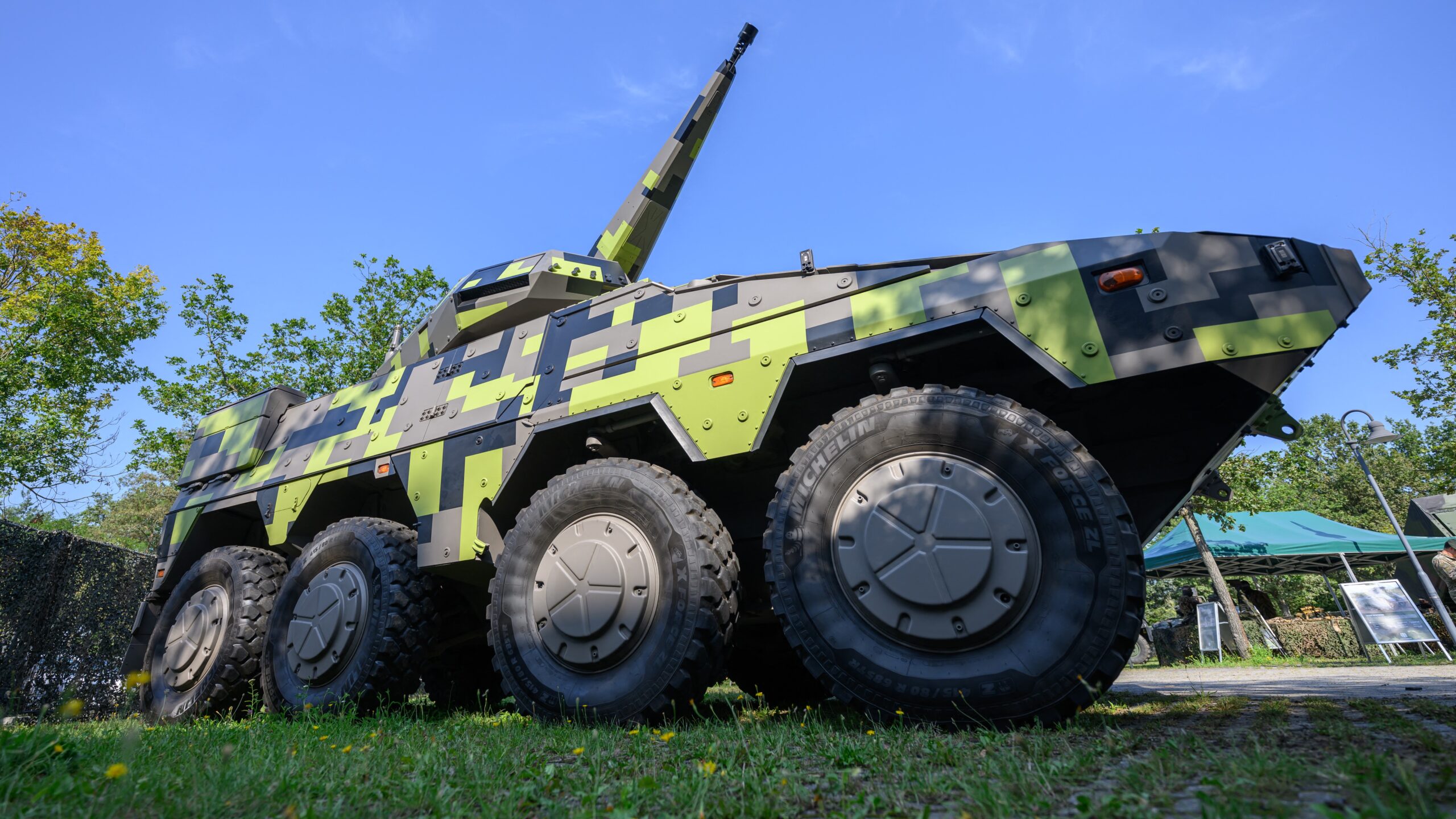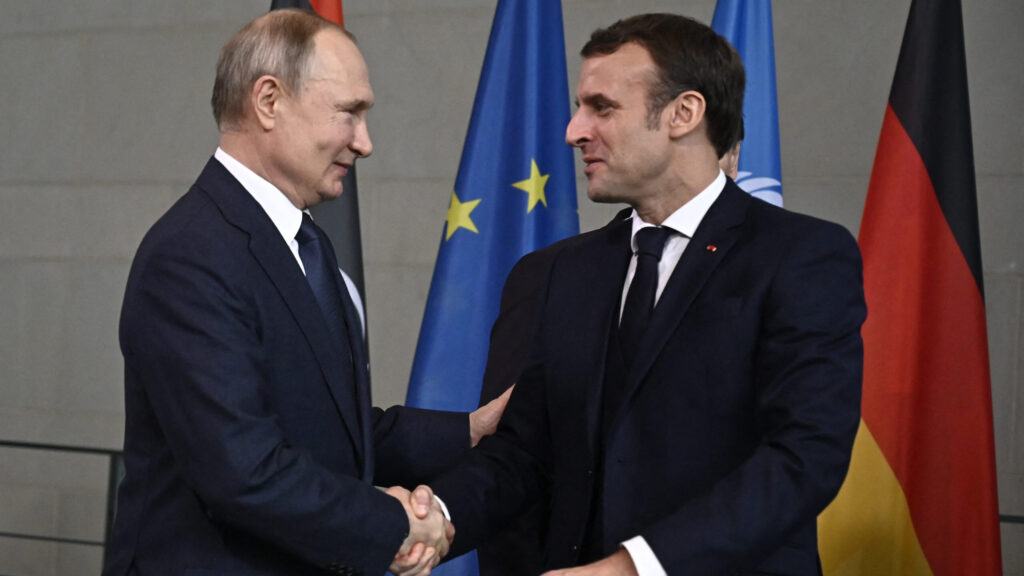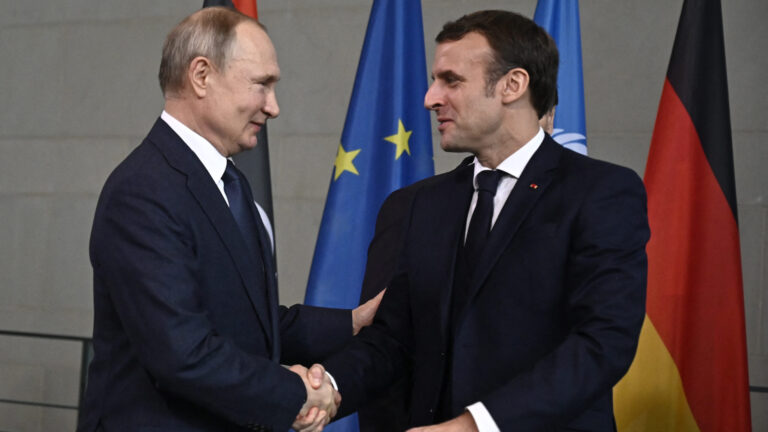Defence Transformation in the European Union: Lagging Behind or Closing the Gap?
‘Before all else, be armed’ — Niccolò Machiavelli
In the past twenty-five years Europe’s defence industry has experienced a prolonged period of stagnation, akin to a ‘Sleeping Beauty’ slumber. However, unlike in the fairy tale, it was not a prince on a white horse that brought about its awakening. Rather, Europe has found itself confronted by a series of internal and external conflicts, positioning it in an increasingly competitive geopolitical environment where it risks falling behind the global frontrunners. The continuous reduction of defence budgets over the past decades has led to a marked decline in Europe’s defence capabilities and industrial capacities. Today, one of the most pressing challenges is to significantly scale up production within a relatively short timeframe, in order to restore competitiveness and strategic autonomy.
The Draghi Report identifies European security and the defence industry as key areas of focus, and rightly so. These sectors provide a clear illustration of the continent falling behind the global leaders. To achieve the report’s primary objective—namely, enhancing competitiveness in the defence industry and strengthening defence capabilities to secure Europe’s position as an independent geopolitical actor in the future—substantial reforms will be necessary.
The shifting, or as the report terms it, ‘deteriorating’ geopolitical environment has also generated new demands regarding defence spending and industrial capacity. The report briefly outlines the challenges and future needs of the EU defence sector in this context.
‘The defence sector is also a key driver of innovation for the entire economy. Historically, the defence sector has been the origin of diverse innovation that has now been mainstreamed in the civilian world. One example is the use of carbon fibre for structural components, of infrared for surveillance, lidar in cars, the internet, GPS positioning, satellite imaging, the three-point seat belt (derived from harnesses designed for military jet pilots)’, the report says. However, the sector currently faces a range of significant challenges, including limited capacity, insufficient expertise, declining technological leadership, inadequate public investment, a shrinking industrial base, poor coordination, and lack of standardization in product development. As a result, it is increasingly lagging global competitors.
New and emerging defence industries necessitate substantial investments and advanced technologies, as the strategic defence priorities of the European Union increasingly diverge from those of the United States. Geopolitical threats, most notably the ongoing Russo–Ukrainian war, have underscored the imperative of enhancing the EU’s defence capabilities. With the US potentially shifting its focus towards the Pacific region, Europe must address its own security challenges, including nuclear deterrence.
While the EU’s defence industry demonstrates global competitiveness in sectors such as tanks, submarines, and naval technology, it faces significant structural challenges. These include limited public expenditure, fragmented industrial capacity, insufficient coordination, and dependency on external suppliers. To meet the growing global demand for defence and respond to future security requirements, the EU must overcome these structural weaknesses and reinforce its technological and industrial foundations.
The report concludes by emphasizing the urgent need for immediate political measures to address these challenges, ensuring that the EU’s defence sector remains competitive and capable of addressing both present and future security threats.
DraghI’S and EDIS[1]
In outlining its direction, the report closely follows and complements the recommendations of the already established European Defence Industrial Strategy (EDIS), which is also acknowledged in the document. The EDIS, presented to the public in March 2024, is the first comprehensive strategy aimed at boosting the defence industry at the EU level. Its core message is straightforward: ‘Invest more, better, together, and European.’ The EDIS represents the EU’s ambitious effort to enhance its ability to respond more effectively to 21st-century security challenges and to strengthen its strategic autonomy. This strategy focuses on developing joint defence capabilities among EU member states, strengthening the European defence industry, and increasing the EU’s role in the global security environment, aligning closely with the Draghi report.
These efforts are warranted by the changing security environment, the emergence of new threats, the instability in regions neighbouring the EU, and the shifting global role of the United States. The fragmented defence capabilities of the EU are insufficient to address these challenges, making the development of a fresh, unified, and coordinated European defence policy imperative. The primary objectives of the EDIS include developing joint defence capabilities, strengthening the European defence industry, enhancing the EU’s role in international security, and reinforcing cooperation between the EU and NATO.
When comparing the Draghi report and EDIS, differences primarily lie in their focus and scope. The two documents are largely complementary and overlapping. While the Draghi report outlines a broader economic and political strategy, placing the defence industry within the wider context of the EU economy and emphasizing its role in innovation and job creation, the EDIS focuses more specifically on industrial strategies and economic measures directly aimed at enhancing the competitiveness of the defence sector. The Draghi report provides a framework, within which the EDIS represents the concrete implementation plan. However, both documents agree on the essential means to strengthen Europe’s defence industry, reflecting the political recognition that Europe must urgently improve its defence capabilities in order to adapt to the evolving global security landscape.
Similarities and Differences Between the Draghi Report and EDIS
Reducing Fragmentation and Increasing Cooperation
The first common point between the two documents is reducing fragmentation, promoting standardization, and increasing cooperation. Both emphasize the issue of fragmentation in the European defence industry, which can be traced back to historical, market, and regulatory factors. Historical conflicts and the legacy of the Cold War have entrenched a nationalistic approach to the defence industry, making cooperation between member states more difficult, often due to a lack of mutual trust. Additionally, individual member states’ defence markets are too small to sustain large-scale production and continuous innovation. The lack of standardized procedures and regulations further complicates joint development and mutual compatibility. Lastly, fluctuations in defence investments create uncertainty for companies, contributing to fragmentation.
The EDIS aims to reduce duplication and promote cross-border collaboration to create a more integrated defence market, thereby improving efficiency and reducing costs. It proposes concrete measures to reduce fragmentation and increase cooperation in the European defence industry, primarily by encouraging joint procurement, which would allow member states to purchase larger quantities at better prices. It also supports joint research and development programs to foster technological advancement and encourages collaboration between industry and research institutions. The EDIS underscores the need for standardization so that defence equipment manufactured in different countries is compatible, enhancing operational interoperability[2]. Furthermore, it proposes the creation of common funding mechanisms to support defence projects and enable joint programming and procurement functions. The goal of the EDIS is to reduce fragmentation and enhance the efficiency and competitiveness of the defence industry through closer cooperation and standardization.
Similarly, the Draghi report emphasizes the need for greater coordination among member states, particularly through pooling resources and standardizing defence products to improve interoperability and enhance economies of scale. The Draghi report highlights how the fragmentation of Europe’s defence industry prevents member states from fully leveraging the benefits of joint procurement and coordination, leading to inefficiencies and making it harder to expand industrial capacity. It advocates for joint investments and procurement as the norm to reduce duplication, improve efficiency, and help lower costs and allocate resources more effectively. Additionally, member states are encouraged to collaborate with NATO and other strategic partners to strengthen defence readiness and cooperation. The report also calls for the establishment of a common European defence market to enable more efficient resource allocation and leverage economies of scale. Finally, the report emphasizes the importance of investment in research and development to ensure that Europe remains at the forefront of defence technologies.
Independent Action
The next key point is the capacity for independent action, which today is most often referred to as strategic sovereignty or autonomy. A strong defence industry is, of course, an indispensable condition for this. Both the Draghi report and EDIS emphasize the importance of European strategic autonomy, although they approach its realization differently. While the Draghi report frequently uses this term, EDIS does not mention it once. This can be easily explained, as EDIS is a policy strategy specifically focused on strengthening the European defence industry, thus contributing to the broader concept of strategic autonomy through one of its critical elements. Instead, EDIS prefers terms like defence readiness or strategic compass[3].
The concept of the strategic compass—which includes the notion of defence readiness—is elaborated in a document adopted by the European Union in Brussels in March 2022, addressing the future of the EU and the security and defence challenges of the coming decade. The strategic compass represents the EU’s new security and defence policy framework, aimed at enabling the Union to respond more quickly and effectively to crises, strengthen its defence capabilities, invest in necessary technologies, protect critical infrastructure, and enhance partnerships (with Ukraine cited as an example). The document prioritizes the EU’s strategic autonomy, its response to modern threats, and the protection of its citizens’ security. Its goal is to ensure that the Union can act sustainably and effectively in a rapidly changing geopolitical environment.
In alignment with the strategic compass, EDIS treats strategic autonomy as a priority, aiming to reduce Europe’s dependence on external suppliers. The document encourages investment in European defence technologies, joint procurement, and internal development to ensure that Europe can independently defend itself. EDIS proposes detailed measures to enhance the competitiveness and autonomy of the European defence industry, focusing on developing the European Defence Technological and Industrial Base (EDTIB)[4], which is essential for achieving the EU’s strategic goals. Furthermore, it emphasizes the standardization of defence equipment.
The Draghi report also stresses Europe’s excessive reliance on external defence imports—especially from the United States. Since the start of the Ukrainian conflict, 78 per cent of military equipment has been sourced from outside the EU, with 63 per cent coming directly from the U.S., while only 18 per cent of military contracts are coordinated within the EU. The report advocates for significant investments in defence technologies to reduce this dependency and exposure, thereby strengthening European autonomy. It places a greater focus on mobilizing financial resources, particularly through strengthening cooperation among member states via joint procurement and financing mechanisms.
Investment in Research and Development
As in other sectors of industry and the economy, investment in innovation and technology plays a critical role in defence. Both the Draghi report and EDIS provide a detailed analysis of the role of research and development (R&D) and innovation in enhancing the competitiveness and autonomy of the European defence industry. Within this framework, both documents highlight the importance of dual-use technologies and the need to involve SMEs and research institutions.
EDIS emphasizes that defence solutions are increasingly reliant on digital tools, such as cybersecurity and artificial intelligence. As a result, EDIS highlights the need for continuous and increased R&D investments to secure Europe’s leadership in defence technologies. Innovation is critical for the competitiveness of the EU’s defence technological and industrial base (EDTIB), as developing cutting-edge technologies not only strengthens defence capabilities but also elevates the overall technological standard of the industry. EDIS advocates for the prioritization of drone and unmanned system technologies, which play a crucial role in current conflicts, such as in Ukraine, and contribute to reducing strategic dependencies. It also encourages the involvement of SMEs in the defence industry, as their agility can significantly aid in the development of dual-use technologies that benefit both civilian and military sectors. To support faster innovation, EDIS proposes more flexible funding cycles for SMEs and seeks to promote the practical application of innovation, particularly through the development and marketization of prototypes. Given that previous experiences have shown that R&D outcomes do not always reach market implementation, this effort is further supported by the European Defence Fund (EDF) through additional funding.
Similarly, the Draghi report advocates for the expansion of Europe’s technological base, particularly in areas such as microelectronics and artificial intelligence. It calls on member states and the private sector to increase investments in defence companies, especially in high-tech sectors. The report emphasizes the importance of developing dual-use technologies, which facilitate greater integration between civilian and military sectors. SMEs, which play a significant role in developing these technologies, often face challenges when entering the defence market. The report suggests that the EU should lower entry barriers and support SME participation in the defence sector.
In the field of research and development, the EU also lags significantly behind its competitors. In 2022, EU member states collectively invested €9.5 billion in defence R&D, of which €3.5 billion was allocated to defence research and technology (R&T). An additional €1.2 billion from the European Defence Fund (EDF) for collaborative defence R&D projects brought the total funding to €10.7 billion. This level of investment is far from the U.S. Department of Defence’s 2023 budget, which allocated $140 billion for research, development, testing, and evaluation. The U.S. has prioritized R&D and R&T spending above all other military expenditure categories since 2014, a trend that continued into 2023 with the largest relative increase in this category within the defence budget[5].
But as if the extremely scarce, almost frivolous, level of spending on R&D in Europe were not enough of a problem, the Draghi report also criticizes the lack of cooperation and coordination between Member States in the field of R&D. Most defence investments are made at the national level, and joint programs do not receive sufficient support. This hinders the realization of large-scale, long-term R&D projects and delays technological breakthroughs. To promote joint R&D projects, the EU should adopt more collective funding mechanisms and allocate significantly more resources to such collaborations.
Institutional Reforms
Finally, but by no means least, we arrive at the question of institutional reform. While this point may seem somewhat secondary, it is here that the report presents its most critical recommendations. Both EDIS, and even more so the Draghi report, call for stronger EU-level governance and political coordination to ensure better alignment of defence policies. Although this aspect is given less emphasis in EDIS, it still advocates for strengthening the role of EU institutions, such as the European Defence Fund, to simplify cooperation.
The Draghi report proposes a clearer institutional framework to define the roles of the European Commission and the member states. As a first step, the EU’s institutional structure must be reformed to ensure more effective coordination of defence industrial policy, which would naturally involve strengthening the leadership role of the European Commission. Additionally, the report suggests creating a new position, the Defence Industry Commissioner, which would unify the cooperation between the Commission, the European External Action Service (EEAS), and the European Defence Agency (EDA). The Commissioner would be responsible for developing, coordinating, and implementing a unified defence industrial policy that responds to today’s geopolitical context[6].
The Draghi Report suggests that the goals of defence industrial policy should be organically integrated into the discussions of the Foreign Affairs Council in its defence policy formation, allowing member states to come up with a common stance. Furthermore, the report recommends the establishment of a centralized European Defence Industry Authority, which would oversee joint programming and procurement functions and centrally manage the defence acquisitions of member states. This authority would help review the capabilities of the EU’s defence industrial base and promote the use of European defence solutions within NATO. The institution would be managed by the European Commission, in collaboration with the European Defence Agency[7].
A review of the EU’s internal rules and procedures is also necessary to simplify and expedite decision-making, particularly in crisis situations. This includes better coordination of the acquisition of American defence systems by sub-groups of EU member states to secure better terms through joint procurement and adapt American products to European specifications, including local production, support, customization, and intellectual property rights transfer.
In essence, the proposed reforms would imply greater centralization at the expense of member states, granting the Commission expanded authority in coordinating and supporting defence industrial initiatives.
Overall, both documents advocate for the creation of a more integrated, innovative, and autonomous European defence industry, advancing cooperation, technological development, and strategic autonomy. There is no doubt that Europe needs such an industry, but once again, we must ask: at what cost? Draghi would, as mentioned in the previous article, take away rights from the Member States in exchange for remedying problems in this area too.
With the theoretical framework now complete, this is the plan for saving the European defence industry, according to Draghi and the Commission. However, the most intriguing part lies ahead. In the next and final section, we will examine the difficulties and challenges in translating this plan into reality and assess how viable Draghi’s vision truly is.
[1] ’EDIS, Our common defence industrial strategy’, European Commission, (13 September 2023) https://defence-industry-space.ec.europa.eu/eu-defence-industry/edis-our-common-defence-industrial-strategy_en accessed: 10 October 2024
[2] Technical interoperability means the ability of different systems and devices to work together and exchange data, even if they come from different manufacturers or use different technologies. In the context of NATO, this is particularly important because the armed forces of the alliance’s different nations use different weapon systems, communication systems, vehicles, and other military technologies. Interoperability ensures that these devices can work together in a coordinated manner. It is important to emphasize that this remains a challenge for NATO forces, as the currently accepted standards often do not sufficiently provide the operational interoperability and substitutability required, as they do not cover all defense systems and are not systematically detailed enough.
[3] ’A Strategic Compass for a stronger EU security and defence in the next decade’, European Council (21 March 2022) https://www.consilium.europa.eu/en/press/press-releases/2022/03/21/a-strategic-compass-for-a-stronger-eu-security-and-defence-in-the-next-decade/ accessed: 10 October 2024
[4]’The EU’s Defence Technological and Industrial Base’, European Parliament (10 January 2024) https://www.europarl.europa.eu/RegData/etudes/IDAN/2020/603483/EXPO_IDA(2020)603483_EN.pdf accessed: 10 October 2024
[5] Draghi report (Part B), p. 165-166.
[6] Draghi report (Part B), p. 170.
[7] Draghi report (Part B), p. 170.
Read Part I of the analysis:







